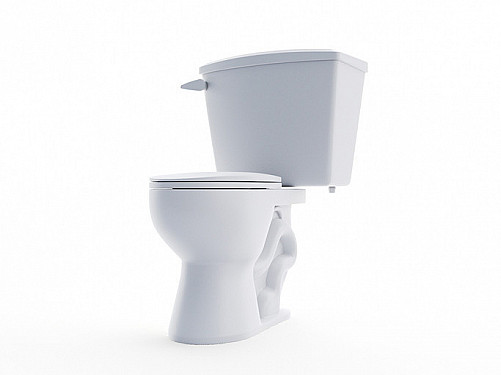
If the first goal of a drug advertisement is to grab your attention, this ad for Entyvio (vedolizumab) works.
You see a young woman getting into her car, sitting in her work cubicle, sitting in a restaurant, and finally in the waiting room of her doctor’s office. But she’s not sitting on the seat of the car or on a chair; in every scene, she’s sitting on the lid of a toilet.
Strange, right?
Why all the toilets?
The voiceover provides a clue: “When you live with moderate or severe Crohn’s disease or ulcerative colitis, your day can be full of reminders of your condition. Never knowing, always wondering.” And there’s another hint: the woman keeps grimacing and clutching her belly.
But these clues may not be enough. What’s never explained in this ad is that abdominal pain and sudden diarrhea are among the most common symptoms of Crohn’s disease and ulcerative colitis, conditions known collectively as inflammatory bowel disease (IBD). The “never knowing, always wondering” refers to the way people with these conditions often have unpredictable bouts of diarrhea and an urgent need to get to a restroom. And that’s why there are toilets everywhere.
What does this ad get right?
The ad provides useful information about:
- How this treatment works. Crohn’s disease and ulcerative colitis are two forms of IBD that cause inflammation of the intestinal tract. Given as an infusion every two months, vedolizumab works by blocking cells involved in that inflammation. The ad uses visually appealing animations and graphics to get these points across.
- Side effects. The FDA requires every drug ad to describe common and potentially serious side effects. For vedolizumab, possible side effects include infusion reactions, allergic reactions, liver problems, and an increased susceptibility to infection. The ad highlights an infection called PML, noting that it’s “a rare, serious, potentially fatal brain infection.”
- Benefits. The voiceover states that “in clinical trials, Entyvio helped many people achieve long-term relief and remission.”
What else do you need to know?
As with most drug ads, this ad doesn’t provide all the information that’s important to know about this medication, especially if you’re a person with IBD for whom this drug might be helpful.
For starters, the ad never explains that diarrhea and abdominal pain are among the most common symptoms of Crohn’s disease and ulcerative colitis. And while the ad focuses on frequent diarrhea, it never mentions more serious complications, such as
- bleeding, fistulas (abnormal connections between the intestines and other parts of the body), perforation of the bowel, and bowel blockage
- an increased risk of colorectal cancer
- inflammation in other parts of the body, including joints and eyes.
The ad also omits:
- The high cost of this drug (up to $52,000/year). For some, health insurance may cover much of this cost, and a discount program is mentioned at the end of the ad (though eligibility details are not provided). Still, for many people with IBD, the cost of expensive drugs like Entyvio is a major barrier to receiving optimal care.
Also troubling is the way the ad skims over two important points:
- Little information is provided about PML. The ad doesn’t even say what the letters stand for: progressive multifocal leukoencephalopathy. PML is a virus that can infect the brain, often causing death or severe neurologic disease.
- What benefits does the drug deliver? Only one sentence speaks confidently about benefits, and no details are provided. How often people do taking this drug have at least some relief from their symptoms? How often do they experience remission of symptoms? And how long do these improvements last?
The bottom line
The ad ends with the young woman driving home after her doctor’s visit. She’s sitting on a regular seat for the first time. She glances at the rearview mirror and smiles at the toilet that’s been relegated to the back of the car. The message is clear: she’s better now and doesn’t have to worry about having to rush to the toilet since her doctor prescribed vedolizumab.
Of course, it doesn’t always work out this way in real life. Then again, drug ads aren’t intended to show real life. They’re intended to promote a product. That’s a good reason to maintain a healthy dose of skepticism about drug ads, and to rely instead on your doctor and other unbiased sources for your health information, such as the National Institutes of Health websites.
